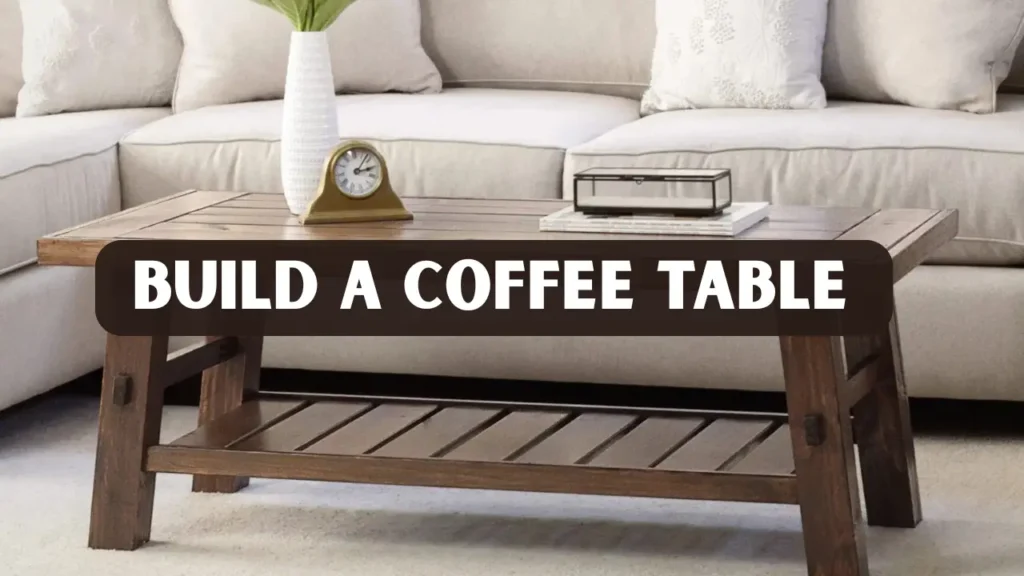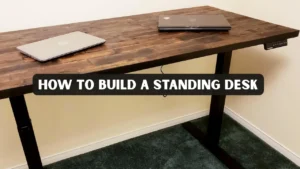Building a coffee table is one of the most rewarding woodworking projects a hobbyist or professional can undertake. Whether you are a beginner or have years of experience, creating a custom table adds both charm and functionality to a living space. In this guide, we will explain how to build a coffee table with a lathe-focused approach, including turned legs and decorative elements, making it ideal for woodworking enthusiasts who enjoy hands-on projects. By following this guide, you can create a unique piece that reflects your craftsmanship and personal style.
Why Build a Coffee Table Yourself
Creating your own coffee table allows for an exceptional level of customization. You can carefully select the dimensions, wood type, and design elements to perfectly suit your home decor. Unlike mass-produced furniture, a handmade table gives you the freedom to express your creativity and include unique details that reflect your personal taste. Working on such a project also helps enhance your woodworking skills, providing valuable experience in measuring, cutting, joinery, finishing, and especially lathe work for those interested in turning legs or decorative elements.
Beyond the creative benefits, building a coffee table yourself can be more cost-effective than purchasing a high-quality store-bought piece. You have the flexibility to choose materials within your budget, including reclaimed or locally sourced wood, without compromising on durability or aesthetic appeal. This approach allows you to create a table that is both beautiful and functional while keeping expenses reasonable.
Perhaps the most rewarding aspect is the sense of accomplishment from
completing a project with your own hands. Owning a table that you built yourself brings pride and satisfaction, as it serves a daily purpose while showcasing your craftsmanship. Additionally, learning how to build a coffee table improves your precision, patience, and problem-solving skills, preparing you for more advanced woodworking projects in the future.
Step by Step Process
Step 1: Plan Your Coffee Table
The planning phase is essential for a successful project. Begin by determining the ideal dimensions for your coffee table. Standard tables usually measure sixteen to eighteen inches in height, with widths between thirty-six and forty-eight inches and depths of eighteen to twenty-four inches. Consider the height of surrounding furniture, such as sofas and chairs, to ensure the table is proportionate and comfortable for daily use.
Next, decide on the style of your coffee table. Traditional designs often feature a rectangular tabletop with turned legs, while modern tables focus on clean lines and minimal decoration. Farmhouse-style tables tend to have chunky, rustic legs and a slightly distressed finish. For a lathe-focused approach, adding decorative elements to the legs or aprons can create a unique and elegant look.
Once you have chosen a style, sketch a detailed design. Include the top view, side view, and leg placement in your drawings. Clearly label all measurements and indicate the type of joinery you plan to use, such as mortise and tenon, dowels, or screws. Finally, compile a complete list of all materials and tools needed to streamline the building process.
Step 2: Prepare the Wood
Selecting high-quality wood is crucial to the durability and appearance of your coffee table. Hardwood is preferred for both the tabletop and legs due to its strength and resistance to warping over time. Boards should be straight, dry, and free from defects such as knots or cracks that could compromise structural integrity. Once you have chosen your wood, cut the tabletop boards to the desired dimensions using a table saw or circular saw. The legs should be cut slightly longer than the final height to allow for trimming after turning.
After cutting, sanding the surfaces is essential. Start with eighty-grit sandpaper to remove rough spots and imperfections, then gradually move to two hundred twenty-grit for a smooth finish. Proper sanding ensures the wood is ready for assembly and finishing, creating a professional-looking surface. Sanding before assembly is particularly important, as it is easier to smooth individual pieces than a fully assembled table.
Step 3: Turn the Legs on a Lathe
Using a lathe to turn the legs adds sophistication and craftsmanship to your coffee table. Begin by securely mounting the leg blanks on the lathe between centers, making sure the wood is balanced to prevent wobbling. Using a roughing gouge, round the blank to create the basic leg shape. Once the basic form is established, you can create decorative elements such as tapers, beads, or coves using spindle gouges. It is important to maintain proportions that complement the tabletop for a balanced appearance.
Sanding the turned legs while the lathe spins ensures a smooth, even surface. Begin with coarse sandpaper and progress to finer grits. Always wear a face shield and appropriate safety gear when using the lathe to prevent injury. Careful turning and sanding will result in legs that are not only functional but visually striking, enhancing the overall appeal of the table.
Step 4: Assemble the Coffee Table
Start the assembly by gluing the tabletop boards edge-to-edge and clamping them securely. Allow at least twenty-four hours for the glue to dry. Next, cut aprons to fit between the legs and attach them to the underside of the tabletop using wood glue and screws or dowels. Aprons play a crucial role in stabilizing the tabletop and preventing sagging over time.
Attach the turned legs to the apron corners using mortise and tenon joints or screws reinforced with dowels. It is essential to check the alignment and stability of the legs carefully. Optionally, stretchers can be added between the legs for additional support and design enhancement. Dry-fitting parts before final assembly helps identify any misalignments and ensures a sturdy, balanced table.
Step 5: Finish the Coffee Table
Lightly sanding the assembled table is necessary to remove glue residue and smooth rough edges. Apply wood stain or varnish evenly to enhance the natural grain of the wood. After the first coat dries, lightly sand again and apply a second coat for a richer, more polished finish. For extra durability, especially in high-traffic areas, apply a protective finish such as polyurethane or wax. Adding felt pads to the bottoms of the legs helps protect floors and ensures the table moves smoothly without scratching surfaces.
Choosing a finish is also an opportunity to emphasize the lathe-turned details. A glossy finish can make decorative curves and beads stand out, while a matte or satin finish will highlight the natural texture of the wood.
Step 6: Lathe Decoration Ideas
Lathe work provides endless opportunities to add custom decorative features. Turning small spindles to attach around the apron adds a classic and elegant touch. You can also create grooves or inlays on the tabletop edges to enhance visual interest. Experimenting with alternating beads and tapers on the legs creates unique patterns that make your table a centerpiece. Incorporating these details demonstrates skill and attention to craftsmanship, elevating the aesthetic of your DIY coffee table.
Case Study: Jane’s Lathe-Turned Coffee Table
Jane, an avid DIY woodworker, wanted to create a coffee table with a combination of functionality and artistic design. She chose to include lathe-turned legs to add elegance to her living room centerpiece. Jane carefully selected maple for the tabletop and oak for the legs, prioritizing durability and a beautiful natural finish. The project began with detailed sketches and measurements, ensuring her design was both proportionate and structurally sound.
During assembly, Jane faced challenges with aligning the turned legs precisely to prevent wobbling. She solved this by using clamps and verifying measurements repeatedly. After five days of work, she had a sturdy, visually appealing coffee table that not only fit perfectly in her living room but also showcased her woodworking skills. Jane’s project illustrates the importance of careful planning, proper material selection, and precise execution when undertaking a DIY coffee table project, especially when incorporating lathe work.
Tips for a Professional Finish
Careful measurement is critical throughout the project when you build a coffee table. Always measure twice and cut once to avoid mistakes, and dry-fit all parts before final assembly to ensure proper alignment and balance. Using clamps is essential for maintaining pressure while glue dries, which helps keep the structure stable and prevents gaps. Paying attention to these details early on makes the assembly process much smoother.
When working with lathe-turned legs, avoid over-sanding, as this can remove delicate decorative shapes and affect the table’s visual appeal. Additionally, allow each coat of finish to dry completely before handling the table to achieve the best results. Following these steps ensures a professional-looking, durable, and beautifully finished coffee table.
Common Mistakes to Avoid
Choosing wood that is prone to warping or cracking is a common mistake and can compromise the durability of your coffee table. Attempting designs that exceed your current skill level may lead to frustration or errors during the building process. Following proper safety precautions is also essential, especially when working with a lathe or other power tools, to prevent accidents and ensure a smooth workflow.
Skipping important steps like sanding or finishing can significantly reduce the table’s lifespan and negatively affect its overall appearance. By planning carefully, practicing patience, and paying close attention to detail, you can avoid these common pitfalls and create a sturdy, professional-looking coffee table that lasts for years.
Conclusion
Learning how to build a coffee table combines creativity and practical woodworking skills. By incorporating lathe-turned legs and decorative elements, you produce a functional centerpiece that reflects your craftsmanship. Careful planning, precise assembly, and attention to finishing details ensure a table that will last for many years. Projects like this enhance your skills while offering satisfaction from creating something unique. For additional guidance and woodworking inspiration, you can visit Woodworking for Beginners, which provides detailed tutorials and expert tips for both novice and experienced woodworkers.
Building a coffee table is not just a furniture project; it is an opportunity to express skill, patience, and creativity while producing a piece that becomes a lasting part of your home.
Frequently Asked Questions
Can beginners build a coffee table with turned legs?
Yes, it is possible. Starting with simple tapered legs or minimal designs allows beginners to gain experience before attempting complex shapes.
What is the best wood for a coffee table?
Hardwoods such as oak, maple, walnut, and cherry are highly recommended due to their durability and ability to finish beautifully.
How much time is typically required to complete a coffee table project?
Depending on the complexity of the design, projects can take two to five days. Adding lathe-turned legs or intricate decorative features may extend the timeline.
Can reclaimed wood be used?
Reclaimed wood can add character and uniqueness to your table, but it must be dry, clean, and free from nails or metal fragments before cutting.
How do I maintain my coffee table?
Regular dusting with a soft cloth, avoiding harsh cleaning agents, and periodically applying furniture polish or wax will maintain the table’s finish and longevity.




